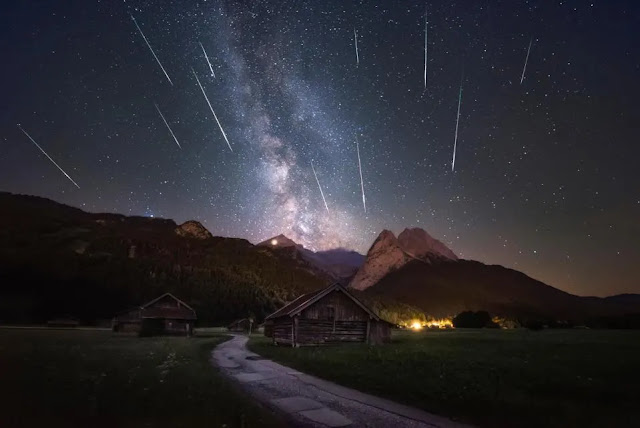The Perseid Meteor Shower Starts Today: Best Times to Watch
The much-anticipated Perseid meteor shower kicks off today, offering a spectacular show for stargazers. While the peak is still a few weeks away, there's plenty of time to plan a trip to an area with dark skies to catch the best views.
Running from July 14 through September 1, 2024, the Perseid meteor shower will peak on the night of Monday, August 11, through Tuesday, August 12. Although you can spot meteors on any clear night during this period, the peak night will provide the most impressive display.
When Is the Peak Night for the Perseids?
The American Meteor Society states that the peak will occur around 04:00 UTC on August 12, which translates to midnight EDT on the same day. The peak period is broad, so you can expect a high number of meteors from about eight hours before and after this time. Start watching as soon as it gets dark on August 11.
This year’s peak has favorable conditions. A 43%-lit waxing crescent moon will set just before midnight in the northern hemisphere, leaving the rest of the night free from moonlight interference—perfect for meteor viewing.
If you haven’t planned your Perseid meteor shower viewing yet, consider taking Monday and Tuesday off and heading to a camping spot with dark skies. Aim to watch for a couple of hours between 11:00 p.m. and dawn for the best experience.
How Many Meteors Will You See?
The Perseids are often said to produce up to 150 meteors per hour at their peak, though a more realistic number is around 50 meteors per hour under optimal conditions. This rate refers to what an observer would see if they could view the entire sky at once.
What Causes the Perseids?
Meteors, or “shooting stars,” are tiny pieces of rock or dust that burn up upon entering Earth's atmosphere. The Perseid meteor shower originates from debris left by the comet 109P/Swift-Tuttle, which orbits the Sun every 133 years. Discovered in 1862 by Lewis Swift and Horace Tuttle, this comet leaves behind a trail of particles that Earth passes through each year.
These meteors enter Earth’s atmosphere at about 37 miles per second and appear to radiate from the constellation Perseus in the northeastern night sky. However, they can be seen anywhere in the sky.
Tips for Viewing the Perseids
To maximize your Perseid meteor shower experience, follow these tips from NASA:
sa jid
- Get as far away from urban light pollution as possible, preferably to an International Dark Sky Park.
- Choose a location with a clear, unobstructed view of the night sky.
- Dress warmly, as it can get cold at night.
- Be patient and spend at least half an hour watching, preferably lying on a reclining chair or ground pad.
- Avoid using telescopes or binoculars, as they narrow your field of view.
- Refrain from looking at your cellphone or any other white light, as it can ruin your night vision. Use red light only if needed.
Enjoy the show and happy stargazing!
Related Queries:
meteor shower july 2024
perseid meteor shower
perseid meteor shower 2024
perseids
perseids meteor shower 2024
perseid meteor shower 2024 peak
perseid
summer meteor shower
meteor showers in july
meteor shower today
meteor shower in july
5e meteor swarm
how are comets formed






